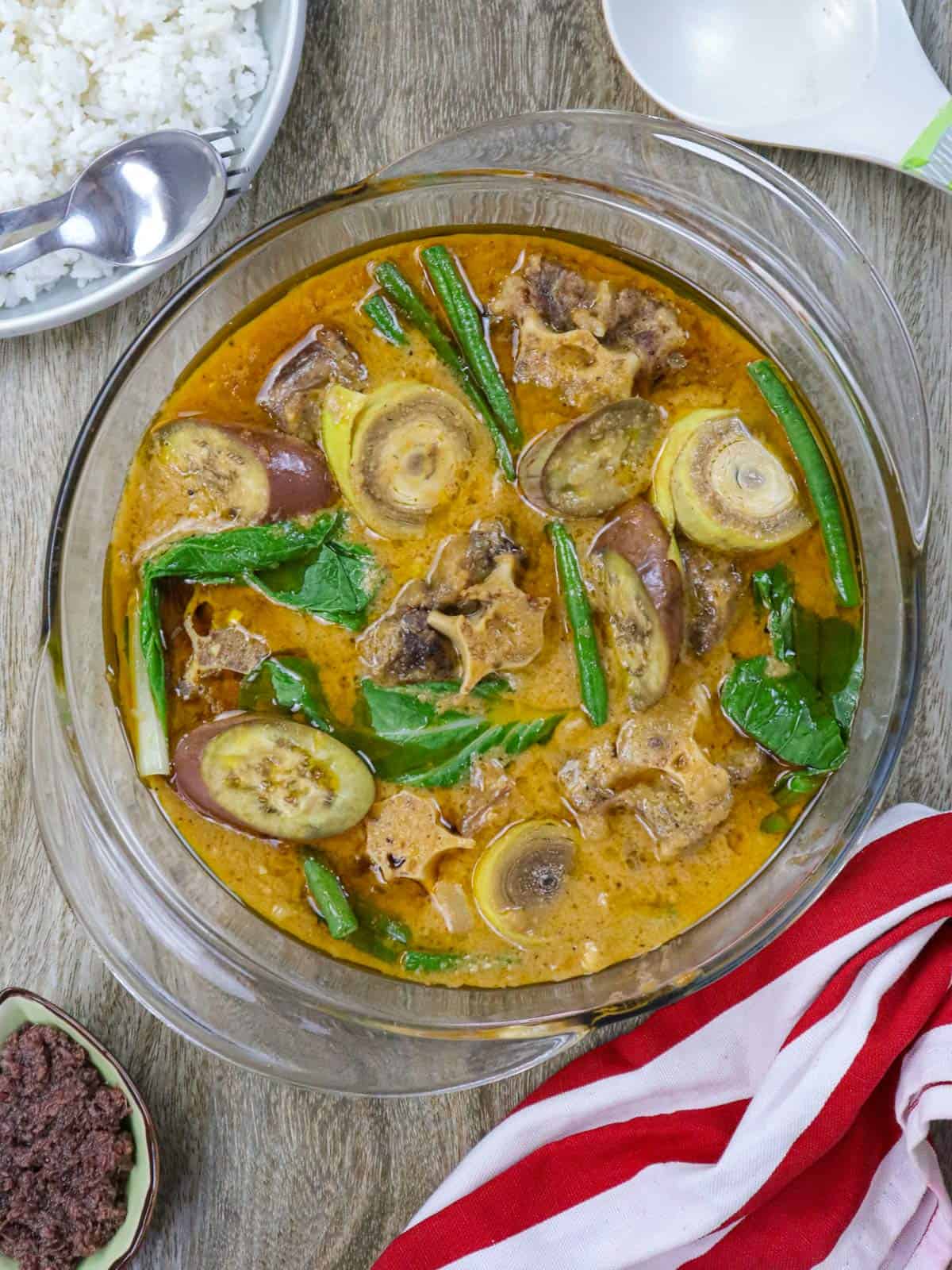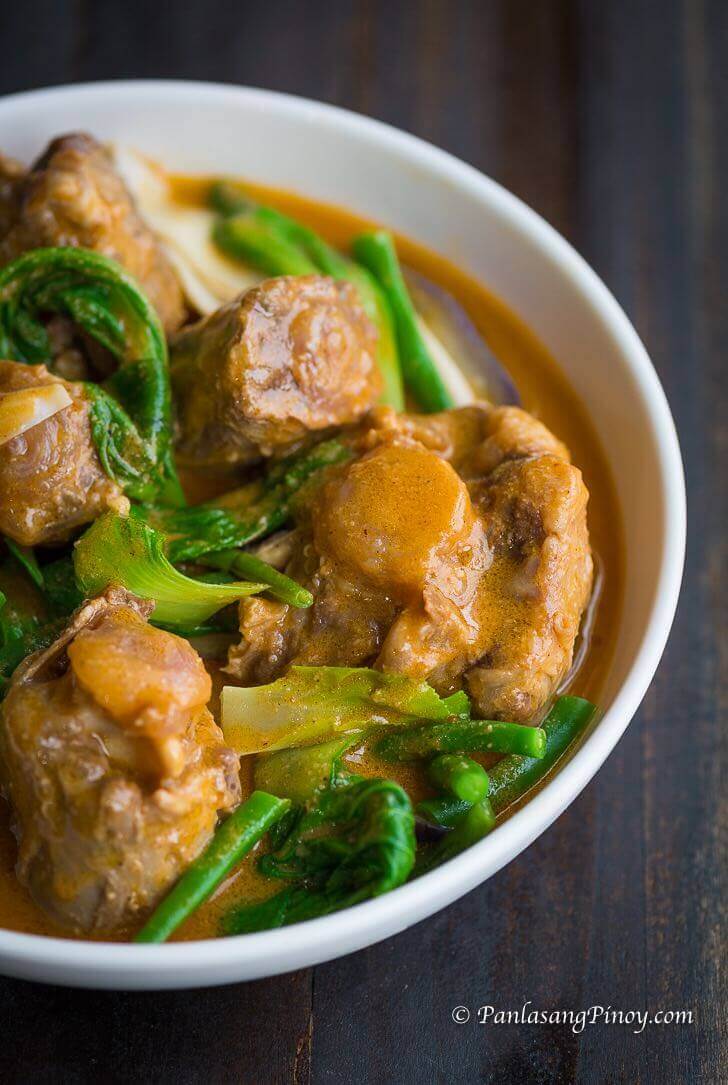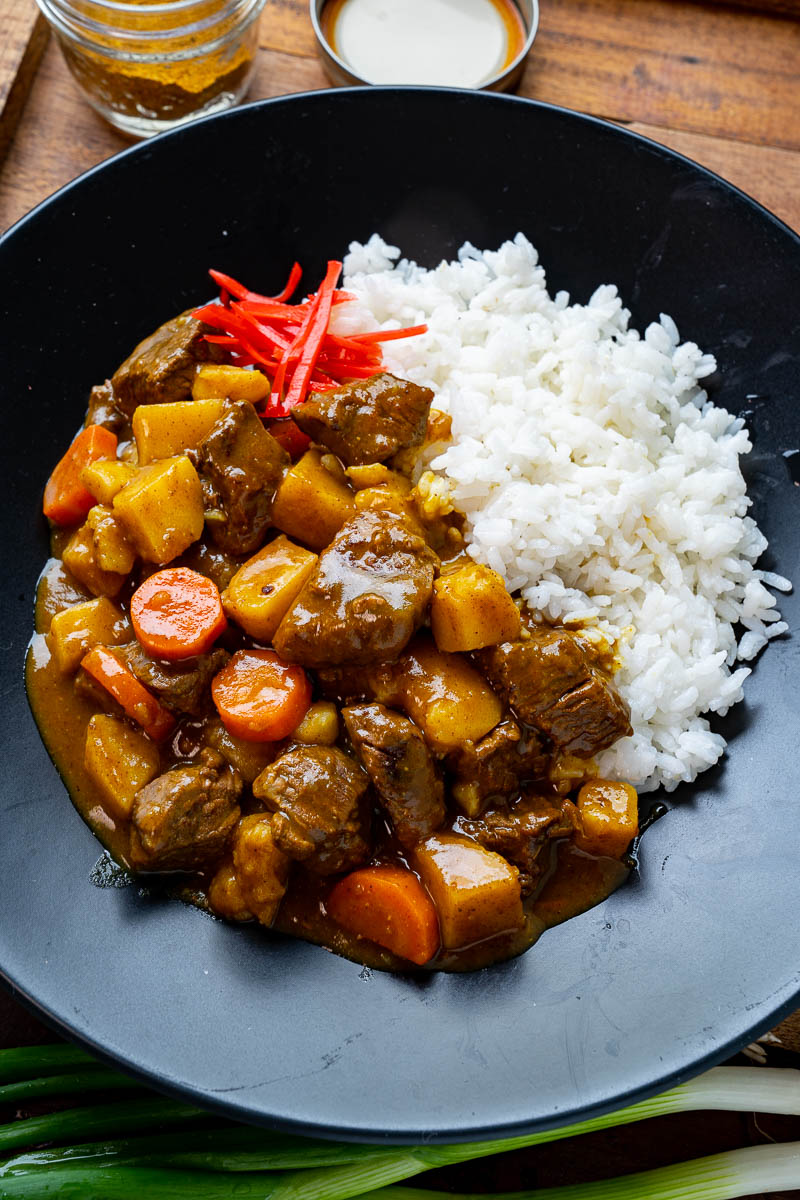Kare, a traditional dish, holds a special place in many hearts. Rich, flavorful, and comforting, it’s a must-try for food enthusiasts.
Kare recipes offer a delightful culinary journey. Originating from Southeast Asia, this dish combines aromatic spices and creamy textures. It’s perfect for those seeking a warm, hearty meal. The beauty of kare lies in its versatility. Whether you prefer chicken, beef, or vegetarian options, there’s a kare recipe for everyone.
The blend of coconut milk, spices, and fresh ingredients creates a symphony of flavors. Preparing kare at home not only brings comfort but also allows you to explore its rich cultural heritage. So, get ready to dive into the world of kare and discover a new favorite dish.

Credit: www.kawalingpinoy.com
Introduction To Kare
Kare, a beloved dish, offers a unique fusion of flavors. Its rich, savory taste has won hearts worldwide. With its roots deeply embedded in culture and tradition, Kare is more than just food. It brings warmth and comfort, making it a staple in many homes. This introduction explores its origins and why it’s considered comfort food.
Origins Of Kare
Kare originated in Asia, with a rich history in Japan. It combines spices from various regions, creating a unique taste. The dish evolved over centuries, influenced by diverse cultures. Each region adds its twist, creating a variety of flavors. This evolution makes Kare a dynamic and adaptable dish.
Why Kare Is Comfort Food
Kare’s creamy texture and savory flavor create a cozy feeling. It’s often enjoyed on cold days, warming the soul. The aroma fills homes, inviting people to gather. Its versatility allows for endless variations, catering to personal tastes. This adaptability makes it a favorite in many families.
Ingredients Needed
Creating a delicious Kare recipe requires a careful selection of ingredients. Each element plays a vital role in achieving the perfect balance of flavors. Let’s explore the essential components needed for this mouth-watering dish.
Essential Spices
Spices are the heart of Kare. They bring warmth and depth to the dish. You will need turmeric for its vibrant color and earthy taste. Cumin seeds add a slight bitterness and earthy aroma. Coriander powder enhances the overall flavor with its citrusy undertones. Garlic and ginger paste provides a robust and spicy kick. Chili powder gives the dish a fiery touch.
Vegetables And Proteins
Vegetables add texture and nutrition. Common choices include potatoes, carrots, and bell peppers. Their natural sweetness complements the spices well. You can also use green beans for an extra crunch.
For proteins, chicken and tofu are popular options. Chicken absorbs the spices well, making each bite flavorful. Tofu is a great alternative for vegetarians. It soaks up the rich sauce beautifully. Both options ensure a satisfying and hearty meal.
Preparation Steps
Creating a delicious Kare dish involves a few key steps. These steps ensure your dish bursts with flavor. Begin with gathering all the necessary ingredients. Freshness is crucial for the best taste. Understanding each step makes the process seamless and enjoyable.
Chopping And Marinating
Start with chopping your vegetables and proteins. Use a sharp knife for clean cuts. Consistent sizes help even cooking. Focus on precision. For meat, marinating is essential. This step infuses flavor deep into the meat. Use a simple marinade with soy sauce, garlic, and ginger. Let it sit for at least 30 minutes. This time allows the flavors to meld.
Cooking Techniques
Heat oil in a large pan. Add chopped onions first. Sauté them until they’re golden and soft. Next, add garlic and ginger. Stir until fragrant. Place marinated meat into the pan. Cook until it browns on all sides. This seals in the juices. Add vegetables in stages. Start with the hardest ones like carrots. Finish with softer vegetables like bell peppers. Pour in coconut milk for a rich base. Let it simmer until everything is tender and flavors are well combined.
Cooking The Kare
Cooking Kare requires patience and precision. This dish is rich and flavorful. It brings warmth and comfort to any meal. Let’s explore the steps to cook the perfect Kare. Each phase is crucial for achieving that authentic taste.
Simmering Process
Begin with a large pot. Add meat, vegetables, and broth. The ingredients should be fresh for the best taste. Bring the pot to a boil over medium heat. Once boiling, reduce to a gentle simmer. This slow cooking allows flavors to blend well. Stir occasionally to prevent sticking. Keep the lid on to retain the moisture. Cook until the meat is tender and juicy.
Achieving The Perfect Consistency
The texture of Kare is important. It should be thick, yet smooth. To thicken, add a roux or cornstarch mix. Stir it slowly into the pot. Keep stirring to avoid lumps. Adjust the thickness to your preference. The sauce should coat the back of a spoon. Taste and season as needed. Balance the flavors with salt and pepper. Enjoy your delicious Kare with rice or bread.
Serving Suggestions
Pair Kare with steamed rice for a comforting meal. For added flavor, garnish with fresh cilantro and a squeeze of lime. Serve alongside naan or roti for a complete dining experience.
Kare, a rich and comforting dish, is perfect for gatherings or cozy nights in. But how do you elevate this delicious meal and make it even more memorable? The right serving suggestions can transform your kare experience from ordinary to extraordinary. Let’s dive into some exciting ideas that will make your kare shine on the dining table.Ideal Side Dishes
Pairing kare with complementary side dishes can enhance its flavors and textures. Consider serving it with a fresh cucumber salad, which adds a crisp, refreshing contrast to the rich and hearty kare. You might also try steamed jasmine rice or warm naan bread to soak up the savory sauce. Think about what you enjoy most with your kare. Maybe a side of roasted vegetables or a simple stir-fried greens can add a delightful balance to the meal. What combination would excite your taste buds?Garnishing Tips
Garnishing your kare can be a game-changer. A sprinkle of chopped cilantro or green onions can add a pop of color and freshness. If you like a bit of heat, try adding thin slices of red chili for a spicy kick. You could also enhance the dish with a squeeze of lime or lemon juice, bringing a bright, citrusy note that cuts through the richness. It’s the small touches that make your kare not just a dish, but an experience. Remember, garnishing isn’t just about looks; it’s about adding layers of flavor and texture. What garnishes resonate with your culinary style?
Credit: panlasangpinoy.com
Variations Of Kare
Kare is a beloved dish with rich flavors and comforting warmth. Its flexibility allows for several variations, each with unique ingredients. These variations cater to diverse palates and dietary needs. Whether you prefer veggies or seafood, there’s a kare for you.
Vegetarian Kare
Vegetarian kare offers a flavorful twist with fresh vegetables. It often includes carrots, potatoes, and bell peppers. Some versions add tofu for protein and texture. Coconut milk gives it a creamy touch. Spices like turmeric and cumin enhance its aroma. This kare is perfect for those who enjoy plant-based meals.
Seafood Kare
Seafood kare brings the ocean’s bounty to your table. It commonly features shrimp, squid, and fish. The seafood blends well with the rich, spicy broth. Coconut milk balances the flavors, making it smooth. Often, this kare includes fresh herbs like basil or cilantro. A delight for seafood lovers seeking a savory experience.
Storing Leftovers
Leftover Kare can be a delightful treat the next day. Proper storage keeps it fresh and tasty. Ensure you store it correctly for the best flavor and safety. Here are some tips on how to do that.
Refrigeration Tips
Place Kare in an airtight container. This prevents it from drying out. Always let it cool to room temperature first. Store it in the fridge within two hours. This avoids bacteria growth. Consume refrigerated Kare within 3-4 days for optimal freshness.
Reheating Instructions
Warm Kare gently for the best taste. Use a microwave or stovetop. If using a microwave, cover it to keep moisture. Reheat at medium power for even heating. Stir occasionally to distribute heat. On the stovetop, use low heat. Stir often to prevent sticking. Ensure it’s heated through before eating.
Health Benefits
Kare is not just a delightful culinary experience. It offers several health benefits. This savory dish is packed with nutrients. It can support a healthy lifestyle. Whether enjoyed as a main course or a side, Kare enhances your diet.
Nutritional Value
Kare is rich in vitamins and minerals. It contains essential nutrients like vitamin C, potassium, and magnesium. These nutrients boost immune function and improve heart health. It also provides fiber. Fiber aids digestion and keeps you feeling full. Kare’s vegetable ingredients contribute antioxidants. Antioxidants fight free radicals and reduce inflammation. Protein from meat or tofu adds muscle-building power. This makes Kare a balanced meal choice.
Healthy Tweaks
Make Kare even healthier with simple tweaks. Use lean meats to reduce fat content. Choose skinless chicken or fish instead of fatty cuts. Incorporate more vegetables for added vitamins. Add spinach or kale for extra nutrients. Opt for brown rice or quinoa as a base. These grains offer more fiber and nutrients. Reduce salt and use herbs for flavor enhancement. This lowers sodium intake while keeping taste intact.

Credit: www.closetcooking.com
Frequently Asked Questions
What Are The Ingredients Of Kare-kare?
Kare-kare ingredients include oxtail, peanut butter, banana heart, string beans, and eggplant. Other ingredients are bagoong, garlic, onion, and annatto oil. Common spices used are salt, pepper, and sometimes fish sauce. This Filipino dish often features a thick, flavorful sauce.
Serve it hot with rice.
What Vegetables To Put In Kare-kare?
Kare-kare includes eggplant, string beans, banana heart, and pechay. These vegetables add flavor and texture to the dish.
Does Kare Mean Curry?
“Kare” is a Japanese term often referring to curry. Japanese curry differs from Indian curry, featuring a milder taste and thicker texture. Popular in Japan, “kare” is typically served with rice or noodles. It’s a unique variation of curry, incorporating local flavors and ingredients.
What Is The English Name For Kare-kare?
Kare-kare in English is called “Filipino oxtail stew. ” It is a traditional Filipino dish made with oxtail, vegetables, and peanut sauce.
Conclusion
Exploring kare recipes is a delightful culinary journey. Each dish offers unique flavors and aromas. Simple ingredients create rich and comforting meals. Perfect for family gatherings or quiet evenings at home. Cooking kare brings joy and satisfaction to the table.
Trying new recipes expands your culinary skills. It’s a chance to enjoy diverse tastes and textures. Whether you prefer spicy or mild, there’s a kare for everyone. Share these delicious dishes with loved ones. Enjoy the warmth and comfort of homemade kare.
Embrace the art of cooking and savor every bite.
